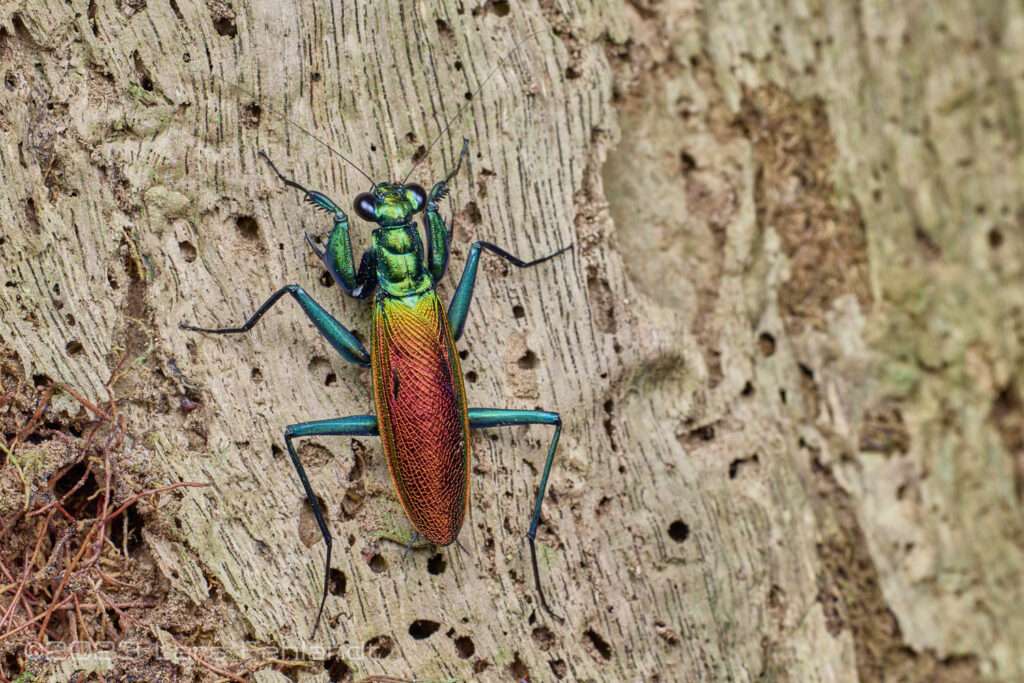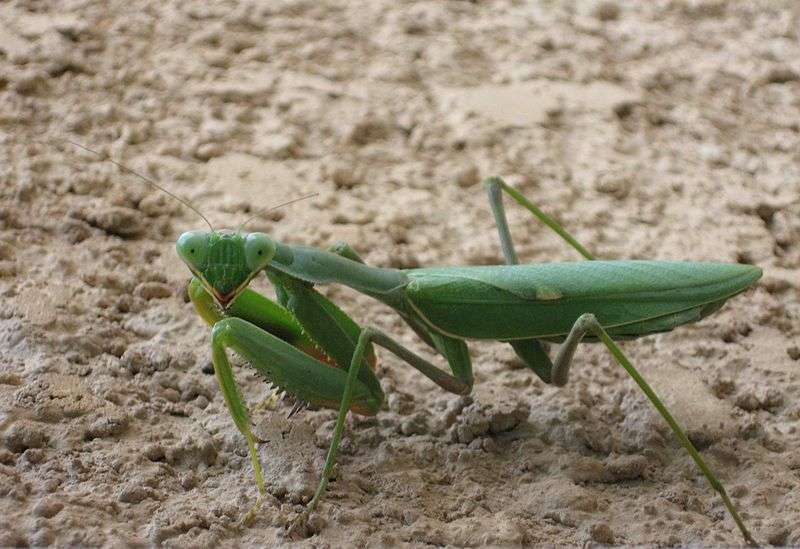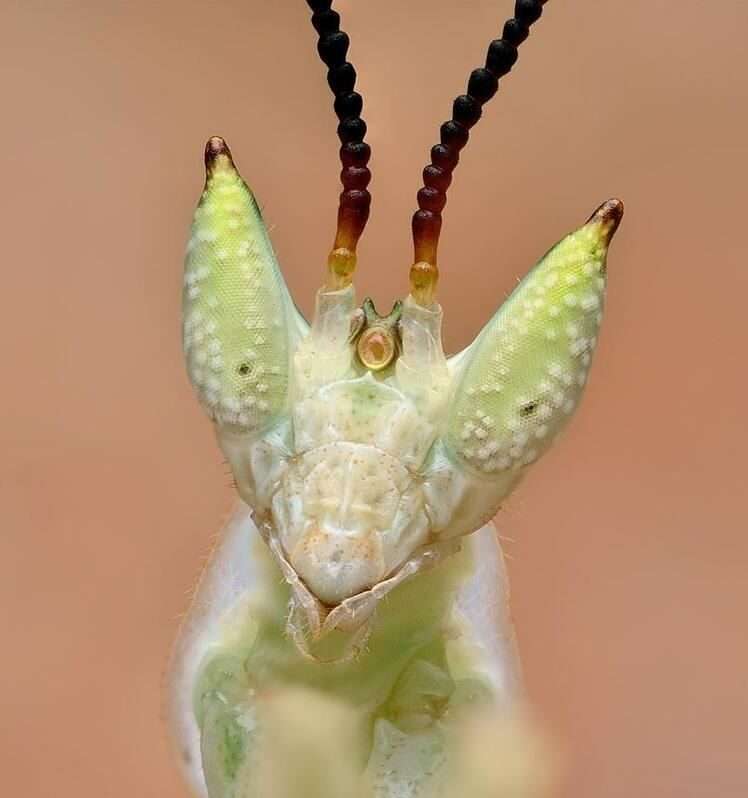
Description
Scientific Name: Metallyticus splendidus
Lifespan: 8-12 months
One of the most incredible species of mantis is Metallyticus splendidus. It has a dazzling, brightly coloured body that is all black. Short, oval-shaped body, blunt head, thick anterior femora, round eyes, and simple antennae are characteristics of M. splendidus.
Habitat
A rare species of praying mantis called Metallyticus splendidus, often known as the iridescent bark mantis, is located in Southeast Asia. Dead trees, such as Vatica rassak, are its typical environment and where its prey are most likely to be discovered.

Behavior
Hunting occurs both during the day and at night for the iridescent bark mantis. Dead trees, where its prey is most likely to be located, are its typical habitat. Nymphs of the ”M. splendidus” species have been observed on the bark’s surface, however adults of the species are typically located below the bark, where they feed primarily on cockroaches and other insects including flies and termites. Instead of ambushing their prey like most mantis species, they usually dart to grab them and bring them back to a fissure to feast. This species uses all six legs while running as opposed to holding the front pair high like many other mantises.
Keeping as a Pet/ In Captivity
25 to 30 °C during the day and room temperature at night.
Relative humidity: day 60-70 percent, night 70-90 percent
Recommended minimum terrarium dimensions are 20 x 20 x 20 cm.
Very little hostility between people
Level of difficulty: challenging, feeding, and specialized habitat
Feeding
All levels of firebrats. M. violaceus nymphs that have just hatched require newly hatched fire-brats. Additionally, you can give little nymphs D. melanogaster fruit flies.
Table





